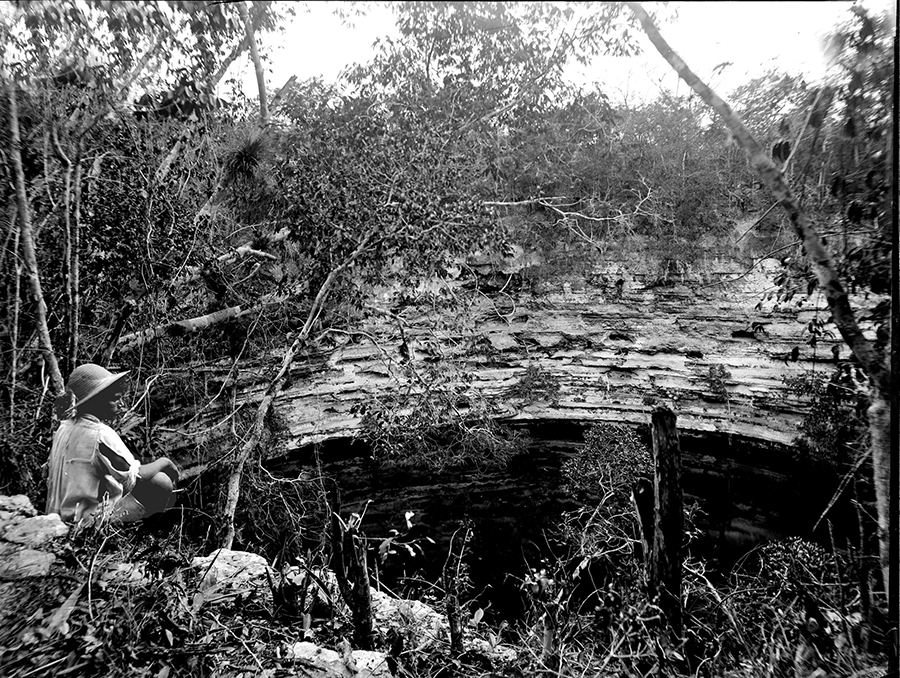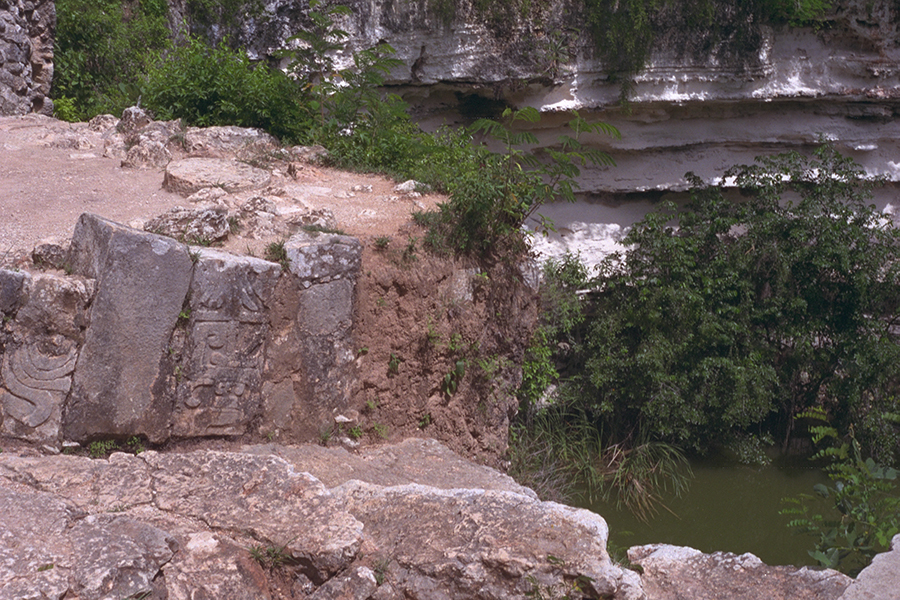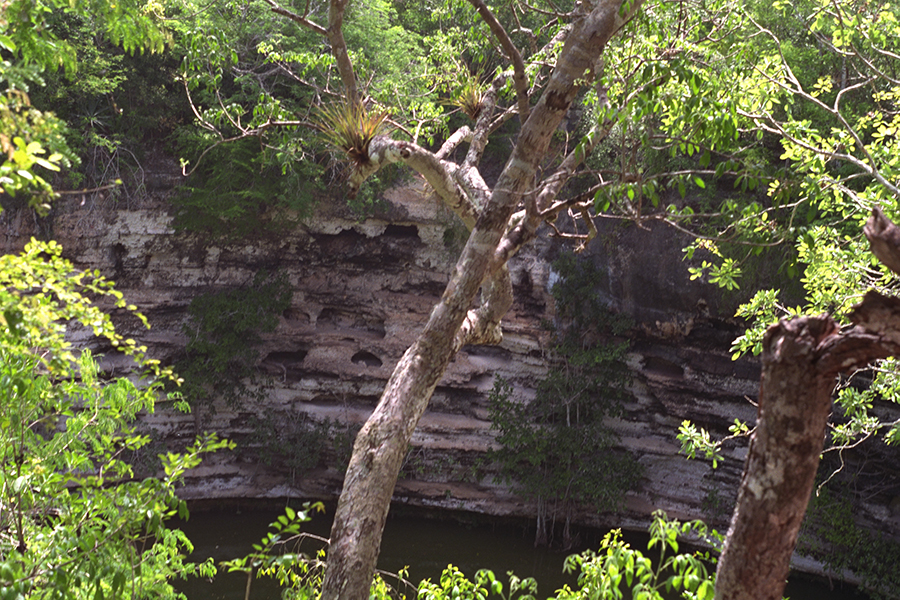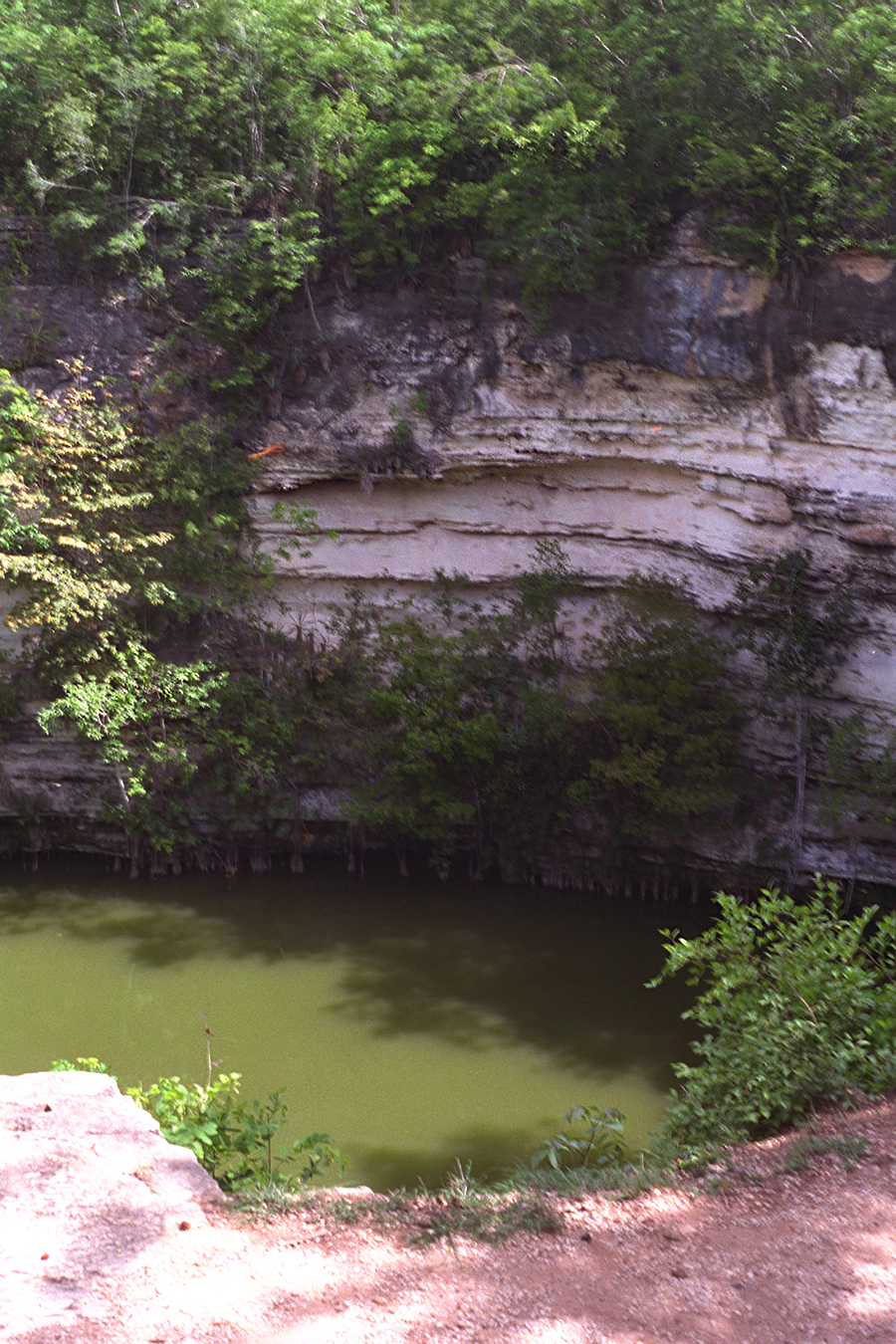

From the Maudslay Collection, British Museum. Used with permission under the CC BY-NC-SA 4.0 non-commercial license. ©The Trustees of the British Museum.
The Sacred Cenote was a ritual center and place of pilgramage throughout Chichén Itzá's long history. Even after the city's decline sometime before 1200 AD, it remained a place of pilgrimage and a place to make valuable offerings to the gods in time of drought.
When the Franciscans arrived in the mid-1500s, the Sacred Cenote was still an active pilgrimage site. Friar Diego de Landa, in his 1574 report to the King of Spain (Relación de las Cosas de Yucatán), wrote:
"Into this well they were and still are accustomed to throw men alive as a sacrifice to the gods in times of drought; they held that they did not die, even though they were not seen again.
"They also threw in many other offerings of precious stones and things they valued greatly; so if there were gold in this country, this well would have received most of it, so devout were the Indians in this."
The Sacred Cenote of Chichén Itzá. Artes de México, no. 152, 1972, pp. 76–80. JSTOR, http://www.jstor.org/stable/24317068. Accessed 9 Feb. 2025.

Note the structure on the extreme right of the photo on the lip of the cenote, from where offerings and human sacrifices were presumably thrown into the water
Clemency Coggins, in her introduction to the Peabody Museum's 1984 exhibition catalog of objects retrieved from the Sacred Cenote, writes:
"On March 5, 1904, Edward H. Thompson lowered a steel bucket into the Sacred Cenote at Chichén Itzá to find out if the Bishop de Landa was right. On April 12, after more than a month of inconclusive results, Thompson dredged up a wooden object which he described as having "the lower end, or butt...beautifully carved into the figure of a personage richly dressed and ornamented. The face is covered with a mask of beaten gold. Although the bishop had no way of knowing of the ancient Maya had ever had any gold (and really they did not), he had been right about gold in the Sacred Cenote of Chichén Itzá."
...The gold was hammered or cast in the lower Central American regions of its origin. Similarly, copper was probably hammered and cast far from Chichén Itzá, in Central Mexico, Oaxaca, the Guatemalan highlands, or Honduras. These exotic riches testify to widespread contact with Chichén Itzá, and to the singular fame of the Sacred Cenote.
Clemency Chase Coggins, editor. Cenote of Sacrifice: Maya Treasures from the Sacred Well at Chichén Itzá. University of Texas Press. Austin. 1984, p. 23, 27
For images of some of the objects dredged up, scroll to the bottom of Biblioteca Digital de la Suprema Corte's article to see a gallery of archaeological pieces from the Sacred Cenote.

This portion of the building on the cenote's lip (which can also be seen on the extreme right in the previous photo) is thought to be the platform from which offerings were thrown into the cenote.
Cenotes were sacred to the Maya because they were regarded as portals to the watery underworld where powerful and malignant gods resided. The Sacred Cenote at Chichén Itzá was especially renowned, retaining a strong attraction long after Chichén Itzá itself faded into insignificance, and drawing people from considerable distances to make offerings in an attempt to please the gods and gain favors.

In addition to Thompson's highly controversial dredging of the Sacred Cenote between 1904 and 1907, the cenote was again dredged in 1960, this time by Instituto Nacional de Antropología e Historia (INAH) in cooperation with National Geographic and the Exploration and Water Club of Mexico, which used a modern air pump and divers to explored its depths.
In the late 1960s, the Mexican archaeologist Román Piña Chan did additional exploration. This time, he partially drained the cenote and then took several days to purify and clarify the remaining water. Later, using a modified air lift, explorations were continued with divers. This last exploration is significant because it provided the greatest amount of archaeological information of any of the previous attempts.
In all, over 30,000 objects have been retrieved from the cenote, including gold and jade objects, copper objects (including some that may have come from Costa Rica & Panama), turquoise and obsidian, pottery, and the bones of over 200 individuals.

The diplomat and explorer, John Lloyd Stephens, visited Chichén Itzá in 1842 and describes his impressions of the Sacred Cenote thus:
"Setting out from the Castillo, we ascended a wooded elevation, which was the largest and wildest we had seen. In the midst of a thick forest, an immense circular hole, with cragged, perpendicular sides, trees growing out of them and overhanging the brink. A hawk was sailing around it, looking down into the water, but without once flapping its wings.
The water was of a greenish hue. A mysterious influence seemed to pervade it, in unison with the historical account that the well of Chichen was a place of pilgrimage, and that human victims were thrown into it in sacrifice. In one place, on the very brink, were the remains of a stone structure, probably connected with ancient superstitious rites; perhaps the place from which the victim were thrown into the dark well beneath."